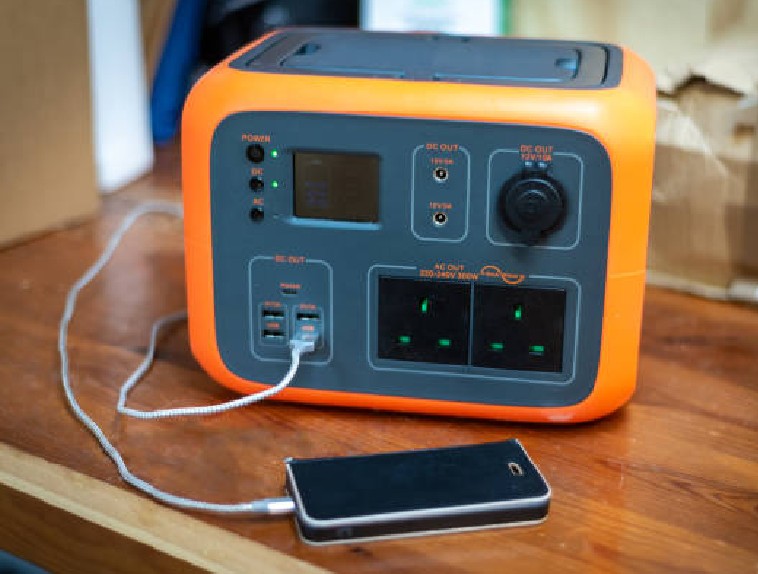Question: Smoke alarms
Many hard-wired smoke alarms illustrate the interconnection of smoke alarms in their installation instructions depicting 3 wires, hot, neutral and the signal wire and indicate the signal wire can be as small as 18 AWG. Do these conductors have to be routed in the same cable or raceway or can the signal wire be routed separately?
Answer
The three wires that are illustrated in the installation instructions are the ungrounded conductor (hot), the grounded conductor (neutral) and the signaling conductor. The signaling interconnection circuit between smoke alarms takes place by using the signal conductor and the ungrounded conductor as the return conductor. Therefore, these three conductors are required to be treated as the same circuit and must be contained in the same cable or raceway as required by Section 300.3(B) in the 2005 NEC. When using a raceway wiring method, the signal conductor can be an 18 AWG conductor as indicated in the instructions, a separate signaling conductor run outside of the circuit cable or raceway is not permitted.
Interconnected multiple station smoke alarms typically used in a single-family residence are Listed under the category Single- and Multiple-Station Smoke Alarms, (UTGT). Guide Information for this category can be found in UL’s Online Certifications Directory at www.ul.com/database and on page 257 of UL’s 2005 General Information for Electrical Equipment Directory (White Book).
Question: Type NM-B nonmetallic-sheathed cable after flood
Can Type NM-B nonmetallic-sheathed cable that was immersed in water during a flood be re-used?
Answer
Type NM-B nonmetallicsheathed cable (commonly called “Romex®” in the industry) is Listed by Underwriters Laboratories Inc. for use in accordance with the National Electrical Code under the product category “Nonmetallic-sheathed Cable (PWVX).” Guide information for this category can be found in UL’s Online Certification Directory atwww.ul.com/databaseand on page 84 of UL’s 2005 General Information for Electrical Equipment Directory (White Book).
In the mid-1980s, the outer jacket of this cable changed from an inpregnated, braided covering to polyvinyul chloride (PVC), and the internal conductor insulation went from a 60°C to a 90°C rating. This newer cable is typically referred to as Type NM-B.
Section 334.10(A)(1) of the NEC indicates that Type NM cable shall be permitted for use in “normally dry locations.” Article 100 of the NEC defines a dry location as:
Location, Dry. A location not normally subject to dampness or wetness. A location classified as dry may be temporarily subject to dampness or wetness, as in the case of a building under construction.
The older, braided jacketed version of this cable has less resistance to water ingress than the newer, PVC jacketed version, and if subject to immersion, such as from flooding, the suitability for continued use is unknown. Any cable of this type that has been subjected to flooding should be replaced without question.
In general, cables with PVC insulation and jacket can withstand immersion in clean water for a short period of time without being damaged as long as the ends are not immersed. For example, a building may be subject to rainfall while under construction, and water may come in contact with the outer jacket of nonmetallic-sheathed cable. This is not prohibited by the NEC. The UL Standard for Safety for Nonmetallic-Sheathed Cables, ANSI/UL 719, requires Dielectric Voltage-Withstand Tests after 24 -hour water immersion of cable samples (with ends in free air). If the ends of the cable are immersed for any period of time, however, the internal paper wrapping around the bare equipment grounding conductor will absorb and transfer the water into the cable assembly. The water may then start degrading the insulation or possibly corrode the conductors. If the cable comes into contact with contaminated water, the contaminants may also act on the insulation or conductors. Over time, failures can occur.
In a flooding situation, there is no way of knowing how long the cables were immersed in water, or what types of potentially corrosive substances may have been in the water that flooded the cables. As was widely reported after Hurricane Katrina, raw sewage and chemicals were known to be in the floodwaters afflicting the Gulf Coast region of the United States. Nonmetallicsheathed cable has not been investigated by UL for this type of exposure. Therefore, it is not possible for UL to state that cable in a particular installation is acceptable for continued use after having been subjected to the flooding.
The safest approach is to replace any nonmetallic-sheathed cable that was immersed in water for any period of time during the flooding.










Find Us on Socials